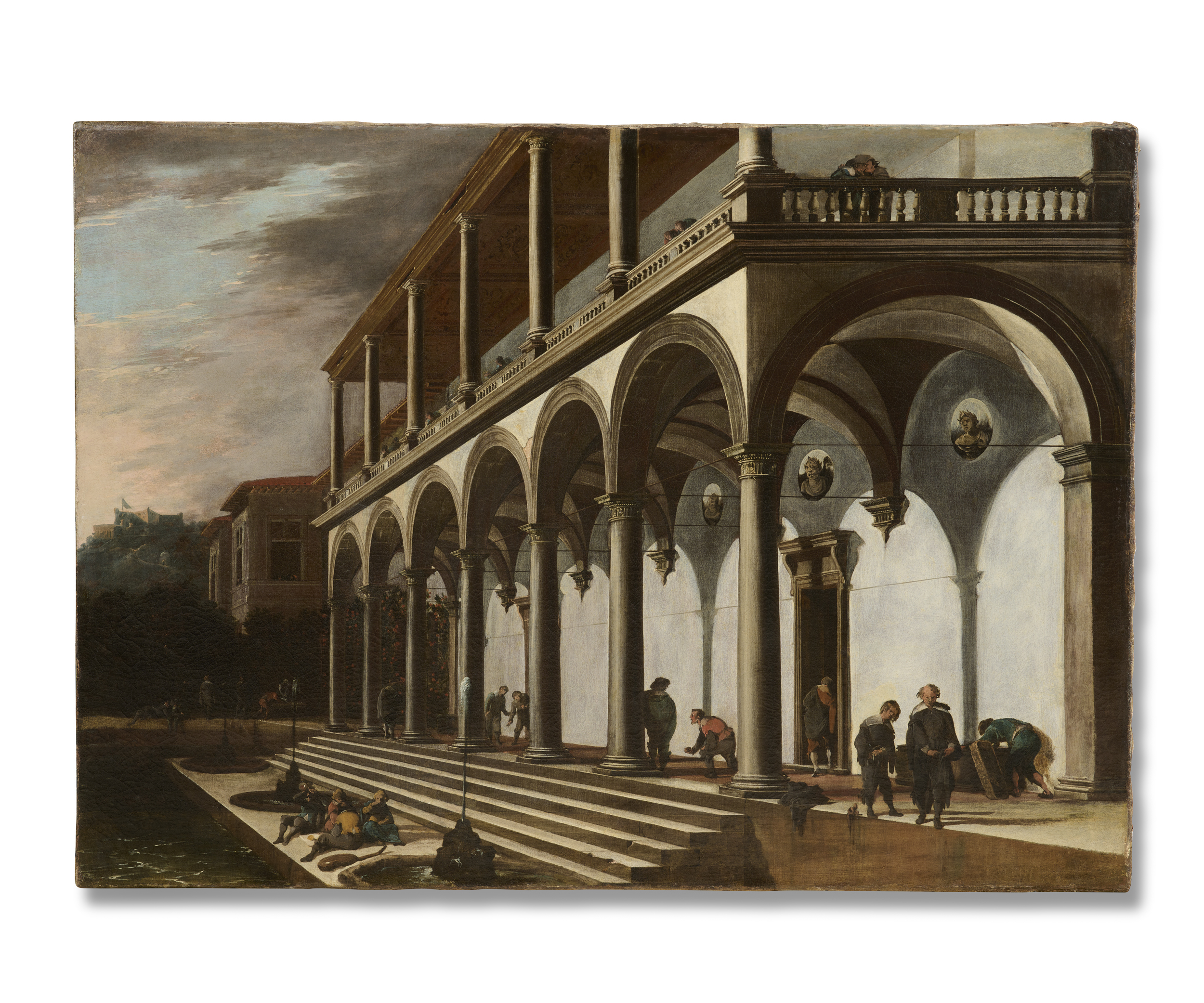

Viviano Codazzi was one of the most renowned architectural painters of the Italian Baroque period, renowned for his architectural paintings, compositions with ruins and veduti. Originally from Bergamo, he moved to Rome as a young man to undertake his training. There, he encountered the strong influence of Caravaggio, whose paintings were visible in churches and palaces across the city. Codazzi may also have developed an interest in architectural painting while in Rome, through exposure to frescoes by Agostino Tassi and to urban vistas by Claude Lorrain. Codazzi was also fascinated by the ancient ruins that he encountered around the city.
In 1633, he moved to Naples where he worked with Cosimo Fanzago on commissions for the Certosa di San Martino. His many real and imaginary views of Naples brought a new intimacy and realism to veduta painting, incorporating the dramatic lighting of Caravaggio into architectural compositions. During this this period he received a particularly important commission for paintings for Philip IV’s Buen Retiro Palace in Spain.
Codazzi returned to Rome in 1647. Around this time, he began a fruitful partnership with Michelangelo Cerquozzi, with Codazzi providing the backdrop and landscape for Cerquozzi's depiction of events and figures in the foreground. Codazzi was patronised by a number of influential figures, including Cardinal Bernardino Spada and Cardinal Flavio Chigi. He continued to produce semi-topographical views which incorporated elements of Roman architecture with fantastical designs, all contributing to the dramatic grandeur of the work. His later works, with their precise composition and heightened contrasts of lighting, showcase Codazzi as a forerunner of the 18th-century veduta tradition.